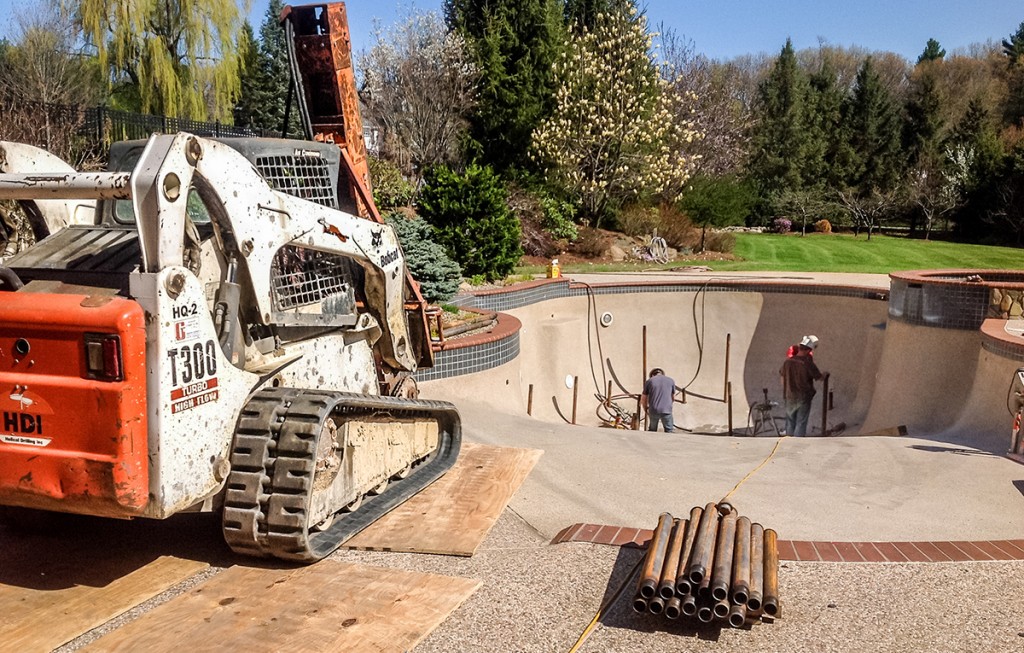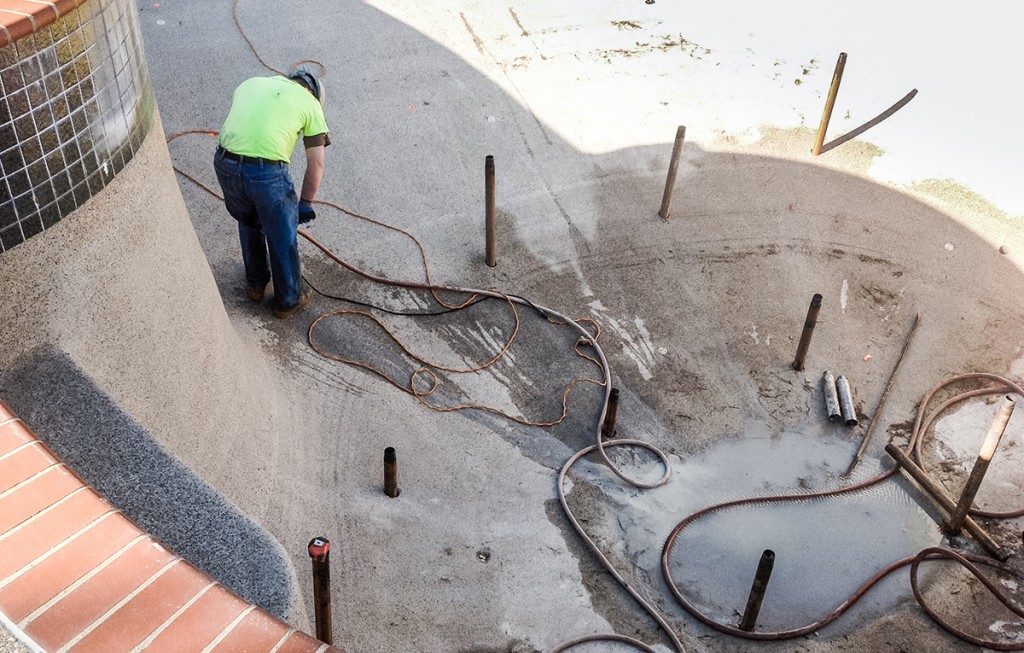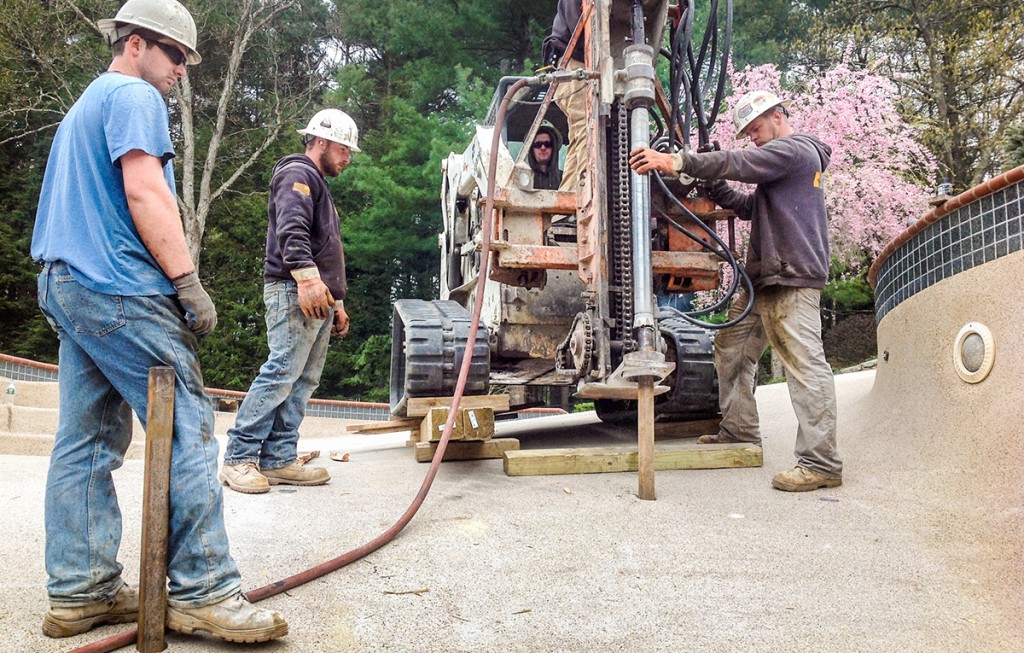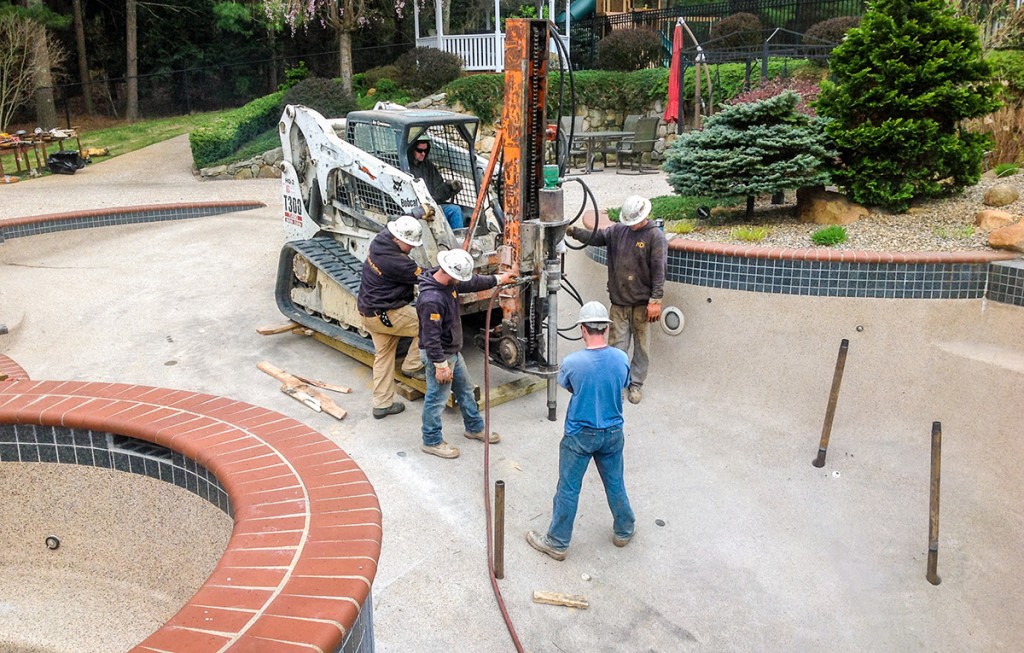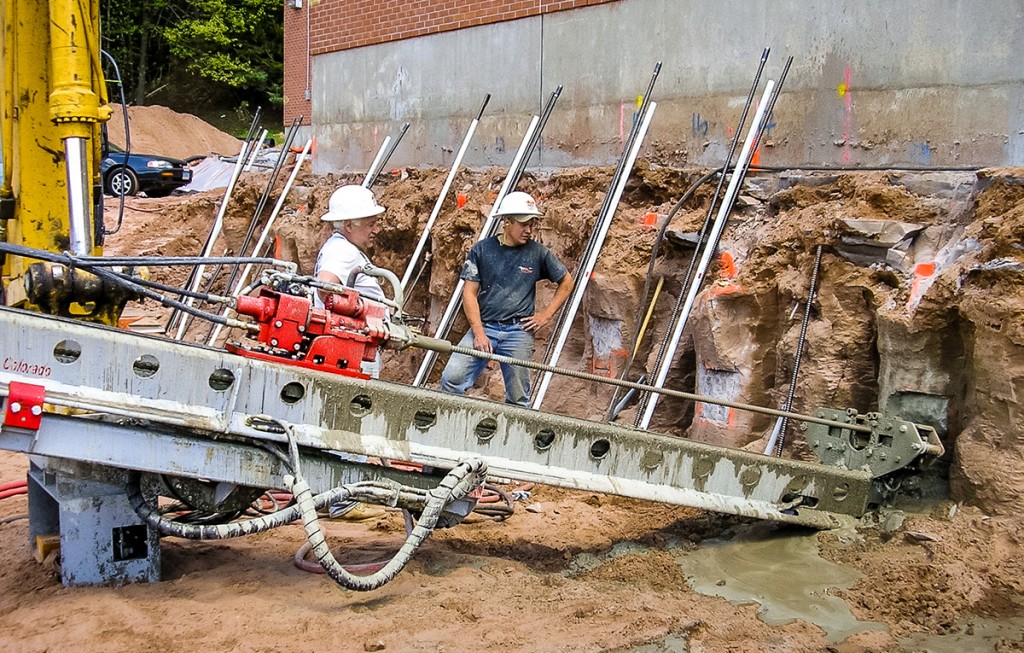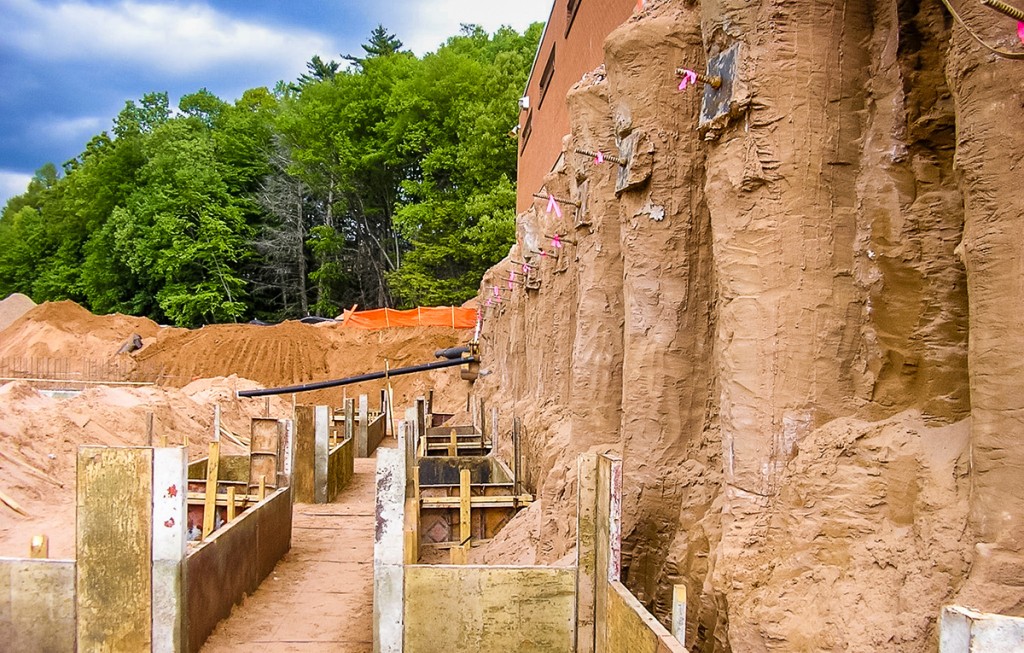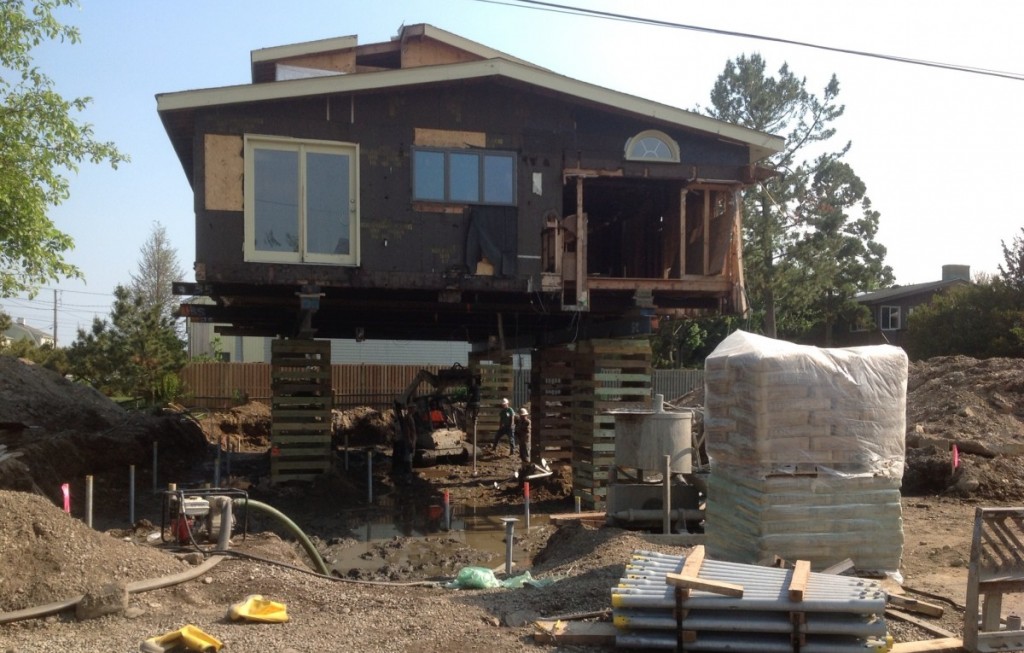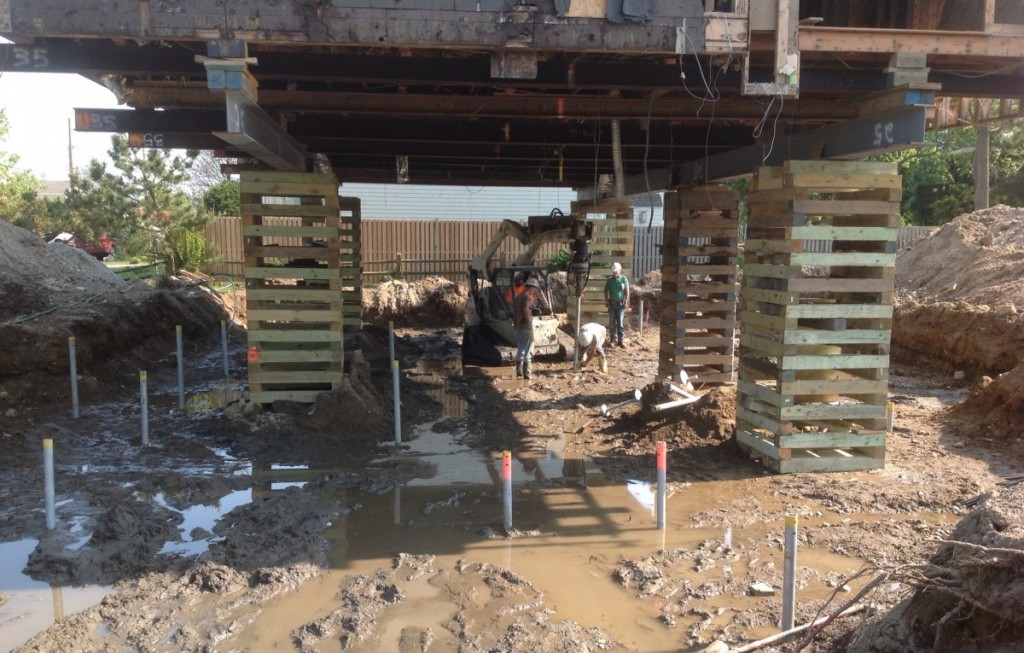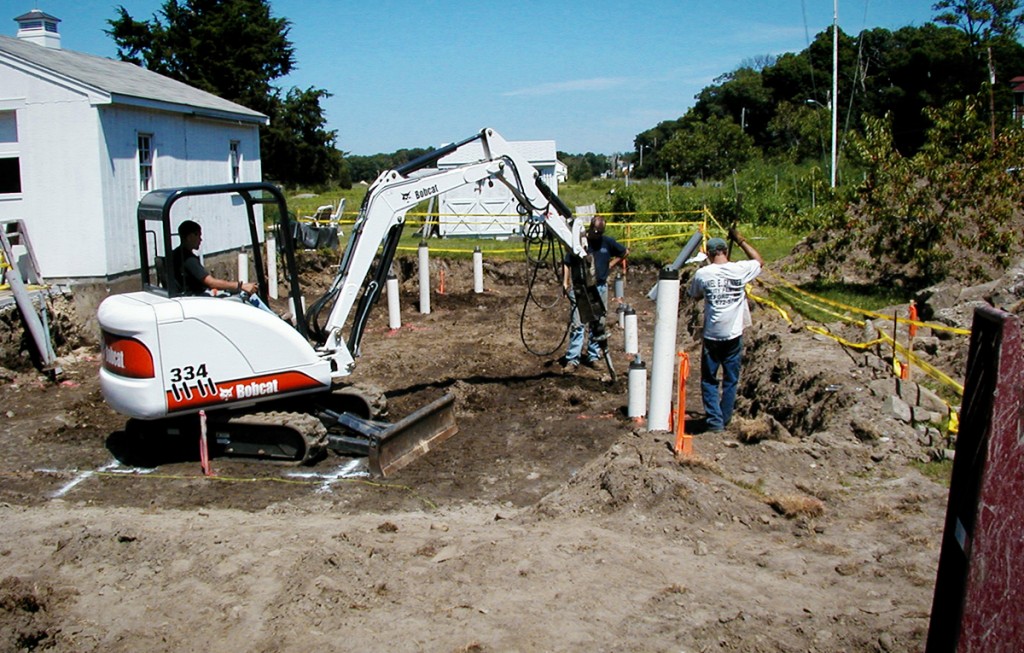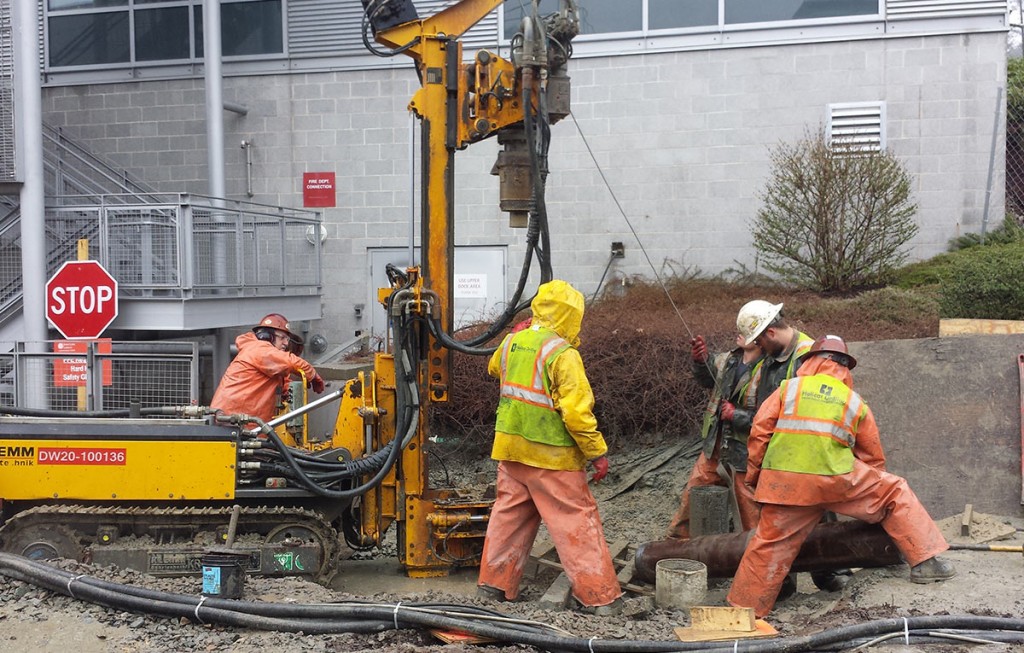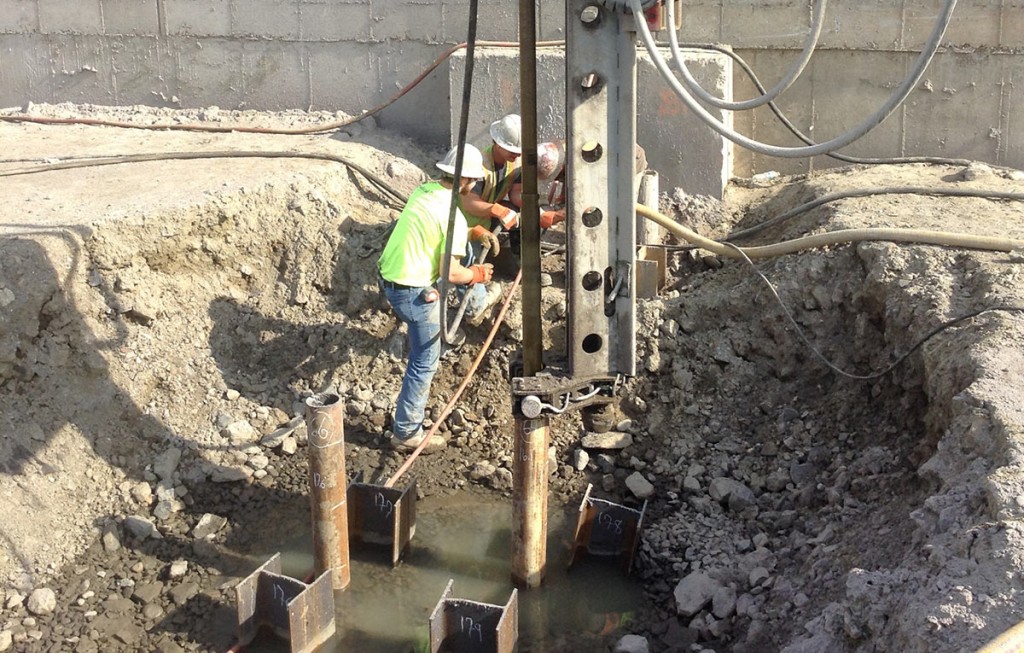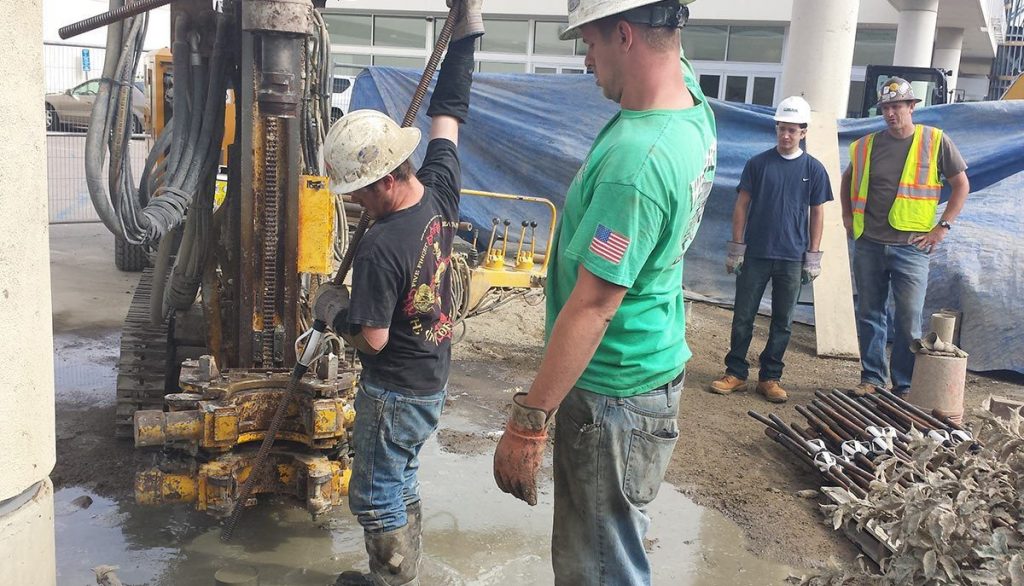Underpinning
Compaction Grouting (Compaction Grout Columns)
Compaction grouting, also known as low mobility grouting, is a ground improvement technique that reinforces unsuitable soils in-place and is used to remediate sinking structures or to underpin existing foundations. Compaction grouting can be performed with only 6 feet of overhead space. The process of compaction grouting involves advancing small-diameter temporary steel casing to a predetermined design depth and then pumping a stiff (low mobility, low slump) grout in controlled lifts at high pressure as the casing is gradually withdrawn. This process displaces and compacts the surrounding soil and builds high-stiffness compaction grout columns. The stiff columns, combined with the improved surrounding soils, act together to support the structure. The grouting material is mixed on-site with a mobile mixer and is injected in a controlled manner to predetermined volume, pressure or movement criteria. In some instances, compaction grout columns can be used to jack up existing structures that have undergone settlement.
View Our Case Studies & Related Projects >
Jet Grouting (Jet Grout Columns)
Jet grouting is a ground improvement technique that improves unsuitable soils in-place and is used for underpinning existing foundations, constructing earth support walls, and constructing groundwater cutoff walls. The process of jet grouting involves advancing steel drill rods using a high-pressure bottom discharge water/grout jet, stopping the bottom-discharge once the predetermined design depth is reached, and then engaging a high pressure side-discharge grout jet that erodes and mixes the soil as the drill rod string is slowly rotated and gradually withdrawn. This process creates “soilcrete” jet grout columns with increased strength and reduced permeability.
View Our Case Studies & Related Projects >
Helical Piles
Helical piles are deep foundation elements that are used to support new foundations or underpin existing foundations. They generate no vibrations and can be installed with only 6 feet of overhead space and in other limited-access situations. The pile shafts are made of galvanized steel and are installed in short sections, each about 5- to 7-feet-long. Each pile consists of a lead helical section with welded screw-like bearing plates; subsequent straight-shaft sections are mechanically-fastened to the lead section as it is advanced into the ground. The piles are installed with a skid-steer or an excavator equipped with a high-power torque head, which is calibrated to directly correlate torque resistance with pile capacity. Helical piles can also be installed with hand-held torque motors for locations that are not accessible with a skid-steer or small excavator.
Helical piles can function as end-bearing or side-friction elements. For an end-bearing pile, the lead section is advanced through the unsuitable soil layers and into an underlying bearing stratum until a predetermined design torque value is achieved. For a side-friction pile, “digger plates” are added between each pile section in order to create annular space around the steel shaft, and the annulus is filled with grout as the pile is advanced into the ground. This process creates a grouted bond with the surrounding soil, resulting in a helical micropile. Similar to a Drilled Micropile, a side friction helical micropile is installed to a predetermined design depth.
Helical piles are ideally suited for foundation support or underpinning requiring low to moderate pile capacity. Alternative foundation options including Ductile Iron Piles or Drilled Micropiles may provide greater design efficiency and cost-savings by affording higher pile working capacity.
Helical piles can also be used as anchors or Tiebacks.
View Our Case Studies & Related Projects >
Drilled Micropiles
Drilled micropiles (DMPs or mini-piles) are high-capacity, small diameter, drilled deep foundation elements that are used to support new foundations or underpin existing foundations. They generate only minimal vibrations and can be installed with only 8 feet of overhead space and in other limited-access situations. DMPs generally consist of a combination of steel casing, threaded bar, and grout. They derive their geotechnical capacity through side friction between the grout and surrounding soil or bedrock. DMP construction methods vary depending on project-specific conditions, but are generally installed by: 1) advancing the steel casing to a predetermined design depth using rotary-wash or compressed-air drilling methods, 2) filling the casing with grout, 3) inserting a central threaded bar through the grout, and 4) withdrawing the casing to create a bond zone between the grout and surrounding soil or bedrock. Some casing is typically left in the ground permanently to facilitate structural connections, for seismic design considerations, or for other design considerations.
DMPs are particularly useful in limited access situations, adjacent to vibration-sensitive structures, and when penetration through relatively dense and/or obstruction-laden fill is required. In cases where the fill is not particularly dense, but limited access and vibrations are still a concern, Ductile Iron Piles or Helical Piles can often be cost-effective alternatives to DMPs.
View Our Case Studies & Related Projects >

